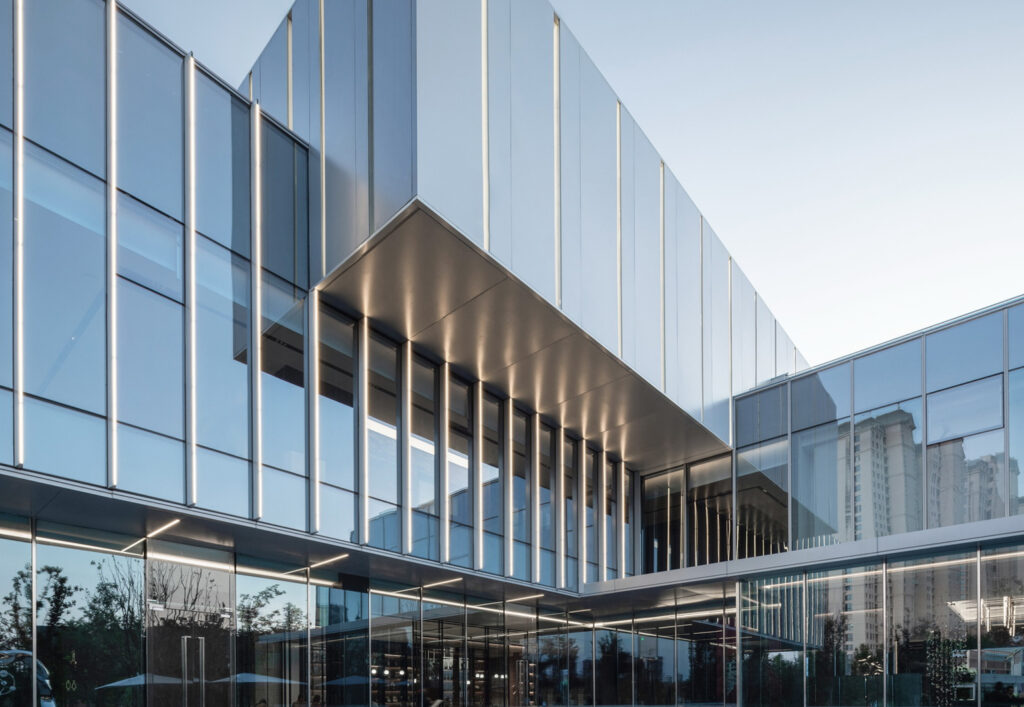Richocean Is China’s Trusted Supplier Of
Windows And Doors Manufacturer


Curtain walls, as an exterior wall system for modern architecture, have become a signature element of high-rise buildings, commercial complexes, and public structures. They not only provide unique aesthetic appeal but also offer functional advantages such as thermal insulation, soundproofing, and waterproofing. This article will provide a detailed analysis of curtain walls, covering their definition, types, advantages, challenges, and manufacturing trends, while also exploring the competitive edge of Foshan, China, in the global curtain wall manufacturing industry.
A curtain wall is a non-load-bearing exterior wall system typically made of lightweight materials such as glass, metal, and stone. It is anchored to the main structure of a building and does not bear the building's load. Instead, it serves as an external protective layer, enhancing the building's aesthetics and providing energy efficiency.
Key features of curtain walls include:
Based on design and construction methods, curtain walls can be categorized into the following types:
1、Unitized Curtain Walls
Unitized curtain walls are prefabricated in factories, with each unit (including frames, glass, and insulation materials) assembled before being transported to the site for installation. This type of curtain wall offers fast construction and controlled quality, making it suitable for large-scale projects.
2、Stick-built Curtain Walls
Stick-built curtain walls consist of vertical mullions and horizontal transoms that form a frame structure, with glass or other panels installed on-site. This type offers high flexibility and is suitable for complex building designs.
3、Point-supported Curtain Walls
Point-supported curtain walls use point-fixing connectors to attach glass to the building structure, creating a visually transparent effect often used in modern building facades.
4、Double-skin Curtain Walls
Double-skin curtain walls consist of an inner and outer layer of glass with an air gap in between, providing superior thermal and acoustic insulation.
Aesthetics and Design Freedom
Curtain walls enable large transparent areas, giving buildings a modern and technological appearance. Materials and colors can be customized to meet various architectural styles.
Energy Efficiency and Sustainability
Modern curtain wall systems often use materials like insulated glass and Low-E glass, which provide excellent thermal and acoustic insulation, reducing building energy consumption. Innovations such as double-skin and photovoltaic curtain walls further enhance sustainability.
High Construction Efficiency
The modular design and factory prefabrication of curtain walls significantly improve construction efficiency, reducing on-site construction time and costs.
Ease of Maintenance
Curtain wall systems are designed with maintenance and replacement in mind, making repairs more convenient.
Despite their advantages, curtain walls face several challenges during design and construction:
1、Waterproofing and Air Tightness
Joints in curtain walls can be weak points for water leakage and air infiltration, requiring precise design and construction to ensure performance.
2、Wind Pressure and Seismic Resistance
Curtain walls in high-rise buildings must withstand significant wind pressure and seismic forces, necessitating rigorous structural calculations and testing..
3、Fire Resistance
Material selection and structural design must comply with fire safety regulations to prevent fire spread.
4、Thermal Bridging
Metal frames in curtain walls can cause thermal bridging, affecting insulation performance, and thus require thermal break measures.
Foshan, China, has emerged as a global leader in curtain wall manufacturing due to its mature technology and cost advantages. As a major building materials production base, Foshan boasts a complete industrial chain, from raw material supply to finished product manufacturing and export logistics.
As an essential component of modern architecture, curtain walls not only enhance the aesthetic value of buildings but also offer numerous functional benefits. With continuous technological advancements, curtain wall design and construction are becoming more intelligent and sustainable. Foshan, China, as a major global hub for curtain wall manufacturing, leverages its mature technology, robust supply chain, and significant cost advantages to deliver high-quality curtain wall products to the global construction industry. Whether for skyscrapers or commercial complexes, Foshan-manufactured curtain walls are driving the development and innovation of modern architecture with their exceptional performance and cost-effectiveness.
Related Articles